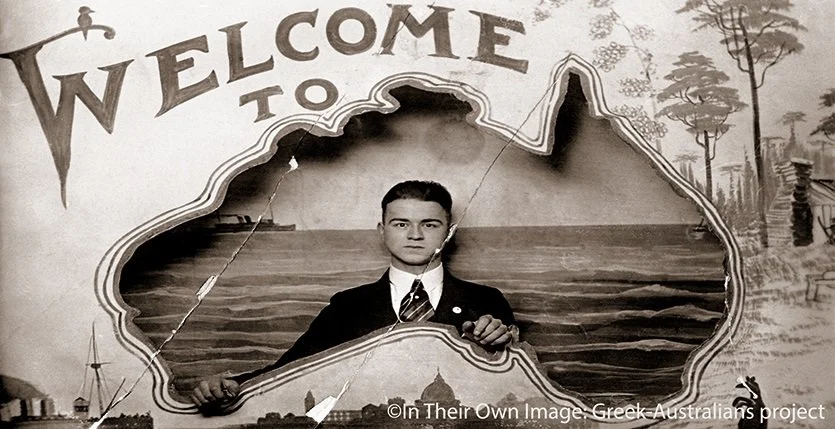Greek City Times is proud to present a weekly historical snapshot
from the archives of the ‘In Their Own Image: Greek Australians’ national project
by photographer Effy Alexakis and historian Leonard Janiszewski.
GREEK CURRENTS IN AUSTRALIAN WATERS
The sea has offered Greek-Australians employment opportunities in a variety of spheres. Many, like Samuel Donnes (Antonatos) and John Peters (Ioannis Iakoumis), both of whom arrived in Sydney during the 1830s, became mariners on coastal or river vessels, while others remained in port as wharf labourers. As early as the 1910s, Greek fishermen at Bunbury, Cossack and Port Hedland on the Western Australian coast, were harvesting the sea for a living, an occupation which, since the Great Depression, has also been undertaken by Greeks at Thevenard, near Ceduna, on the west coast of South Australia’s Eyre Peninsula – the Depression years witnessed the development of a small, though thriving, shark liver oil industry by Thevanard’s Greeks.
During the 1930s and early 1940s in Tasmania, two Kytherian brothers, Gregory and Anthony Casimaty, both acquired and built trawling vessels, employed Greek fishermen to run them, and ventured into the crayfishing (saltwater spiny lobster) industry. In the process, Danish seine fishing techniques were introduced into Australian waters. By 1956, the Haritos brothers, Michael, Jack, Ningle (Nicholas) and George, had pioneered commercial barramundi fishing in the Northern Territory to the extent that interstate markets were beginning to purchase the fish. Hunting both saltwater and freshwater crocodiles for their skin was also undertaken by the brothers. Based in Fremantle, Western Australia, by the early 1980s, a Kastellorizian Greek, Michael G. Kailis, operated prawn trawlers from Exmouth Gulf to the Gulf of Carpentaria. While other major players in Australia’s fishing industry include Angelakis Brothers in South Australia, and Raptis & Sons in both South Australia and Queensland, Perth’s fish retail and wholesale operations are dominated by close relatives of Michael G. Kailis. Greek seafood businesses also dominate the Sydney Fish Markets: Poulos Brothers, Claudios and De Costi Seafoods.
Early Greek settlers opened oyster farms at the Hawkesbury River (just north of Sydney), Great Keppel Island (off Queensland’s mid-east coast), and Bicton (near Fremantle). All supplied a rapidly growing number of Greek-run fish shops, oyster saloons and soda bars during the opening decades of the twentieth century. While Kalymnian sponge divers were brought out during the 1950s to dive for pearl shell in seas off the continent’s north-west coast, one enterprising and single-minded Greek, Con Denis George, experimented with the production of cultured pearls, an avenue later pursued by other Greeks such as Nicholas Paspaley (Paspalis) of Darwin, and Western Australia’s prawn fishing magnate, Michael G. Kailis. Mary Dakas, Nicholas Paspaley’s sister, established herself as Broome’s only Greek female pearler/lugger operator in 1949, and successfully operated luggers out of Broome and Port Hedland for most of the 1950s.
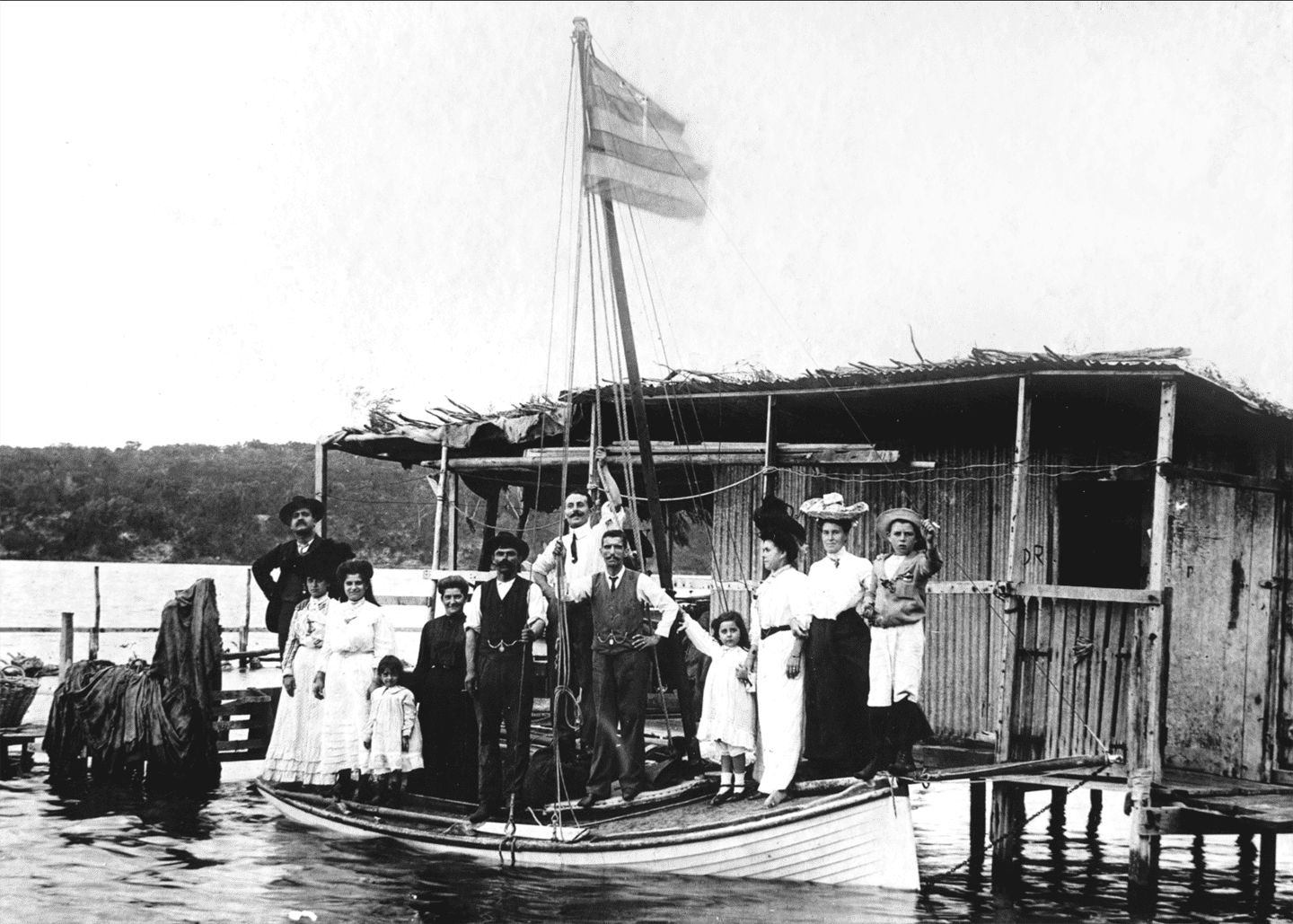
George Falangas (Phalangas) who established the farm on the south bank of the Swan River in 1904, is standing on the extreme left. Falangas pioneered oyster farming in Western Australia. He had arrived in the state during the 1890s and soon opened an oyster saloon in Barrack Street, Perth, which he titled, the Sydney Oyster Saloon. Having initially entered Australia in 1870 via Sydney, Falangas had experienced the success of Athanasios and John Comino’s combined grower, distributor and retailer oyster business and was keen to duplicate their strategy. The extent and success of the Comino’s oyster leases on the Hawkesbury River and along the New South Wales coast, had earned them the title of ‘Oyster King’. Oysters were supplied from their farms direct to their shops as well as numerous other Greek-run oyster saloons, soda parlours, cafés and fish shops.
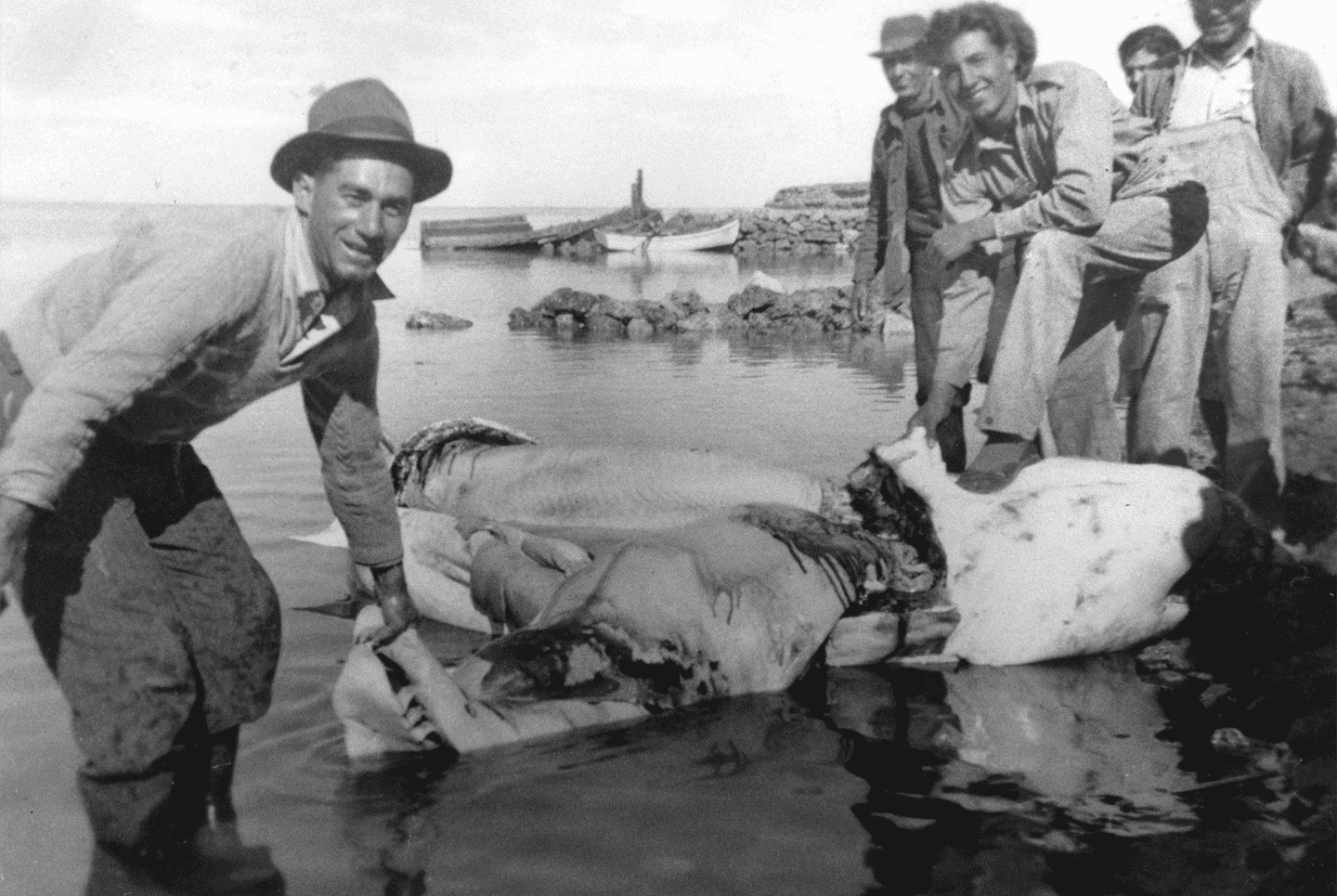
During the 1930s, in addition to whiting, Greek fishermen at Thevenard, near Ceduna, on the north-west coast of South Australia’s Eyre Peninsula, started catching sharks for their liver oil. The oil was extracted by placing the livers in a large steam-jacketed drum – the steam from a boiler would circulate around the livers extracting the oil. Such enterprise generated the development of a small, though thriving, local shark liver oil industry; the oil was used as a lubricant for machinery, as an ingredient in ointments, for the tanning and curing of leather, as a wood preservative (particularly in the waterproofing of boats), as fuel for lamps, in the manufacturing of paint and early margarine, as a vitamin supplement, and in the tempering of steel. Connie D’Ercole (née Kriticos) recalls that up to two hundred sharks would be caught on a good day. Shark fishing was undertaken by using a long line with ten to ninety hooks. The line was suspected across the ocean’s surface by the use of a series of buoys placed in between the hooks.
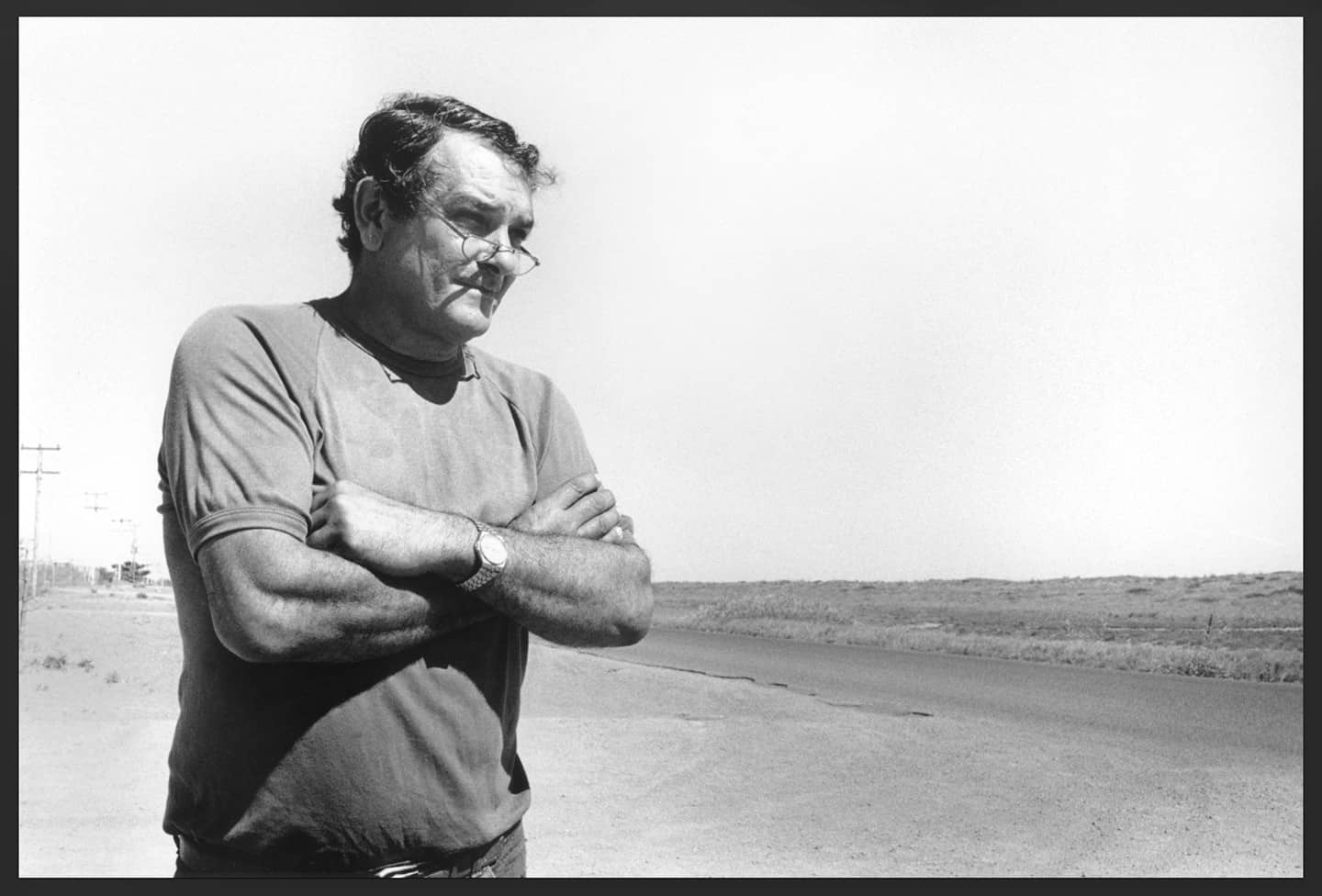
“ Dad came from to Perth aged about sixteen, around 1920… there was nothing in Kastellorizo… I started selling fruit with my father and then went into fish processing with Theo Kailis [G. P. Kailis & Sons and later Kailis and France Group] when I was fifteen – I was with him for fifteen years… I travelled around the world in the fisheries business for the Kailis family… Left Kailis’ seventeen years ago… Came to Onslow eight years ago… A better life up here on the Pilbara coast… its beautiful. Built this business up – Ashburton Fisheries [named after the Ashburton Shire and River] – from nothing… [We now have] a couple of boats of our own and a fish shop… My sons are both on boats now.”
Ashburton Fisheries is still in operation today.
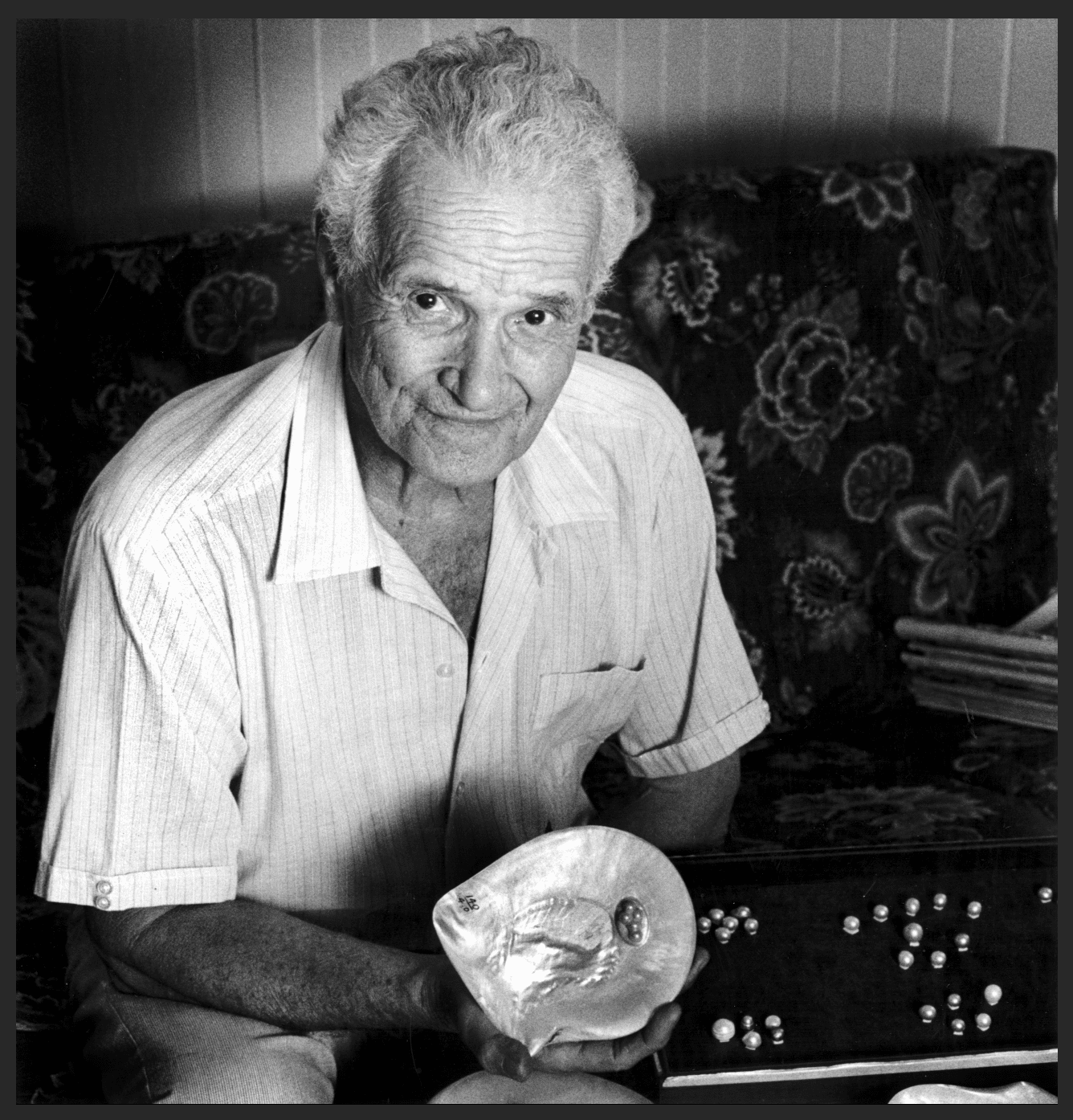
Con Denis George (Georgiades), who preferred to be addressed as Denis George, was born in Constantinople (Istanbul) in 1917 and migrated from Athens to Sydney in 1948. As a youth, Denis had acquired a deep familiarity with the sea, and in 1949, whilst reading for leisure in Sydney’s libraries, he became fascinated by one of Australia’s most abundant marine economic resources: the pearl shell. The thought of possibly cultivating a south seas pearl for commercial distribution germinated, nourished by the fact that the large Australian pearl oyster would provide a cultured pearl much bigger than the small Japanese oysters. Pearl cultivation techniques had been popularly associated with the Japanese, but Denis discovered that during the 1880s and the early 1890s an Australian naturalist, William Saville-Kent, had successfully experimented with south seas pearl oysters and a cultured pearl had resulted.
Between 1952 and 1966, Denis experimented with oysters around Stradbroke Island, Cairns, Fitzroy Island, Thursday Island and nearby Packe Island. He then moved to Papua New Guinea and continued his work for the next sixteen years on Pear Island, just off Samarai Island in Milne Bay.
After returning to Australia, Denis concentrated on documenting and publishing his technical knowledge and experience. His work has been one of the pivotal contributions to the pioneering of Australian pearl cultivation.
“I worked hard for the development of the pearl cultivation industry. Financially I have failed, but not technically. I did all the dirty work. I’m proud of the industry today.”
Denis passed away in 2001.
For more detail on the theme of Greek-Australians and the sea please refer to this journal article by the authors:
Photos: Effy Alexakis
Historical Research: Leonard Janiszewski
© In Their Own Image: Greek-Australians National Project Archives
ABOUT EFFY ALEXAKIS & LEONARD JANISZEWSKI

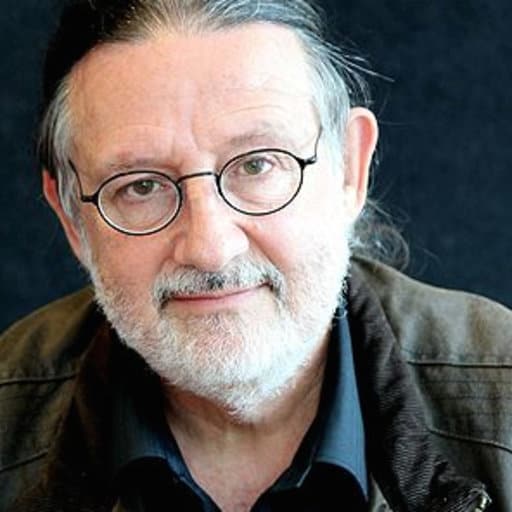
Since the early 1980s, Effy Alexakis, a photographer, along with historian researcher Leonard Janiszewski, have been travelling around Australia photographing and collecting stories. They have also photographed Greek-Australians in Greece and documented some amazing histories. The images and text provide personal, diverse and powerfully moving insights, about opportunities, hopes and challenges. Collectively, these stories provide personal perspectives of a diasporic Hellenic identity. Their archive encompasses photography, both historical and contemporary, taped interviews and literary materials.
They have published 3 books and numerous articles, and their projects are ongoing. The photographs have been widely exhibited throughout Australia and in Greece.
VISIT THEIR LATEST PROJECT: Greek Cafés & Milk Bars of Australia | Facebook

